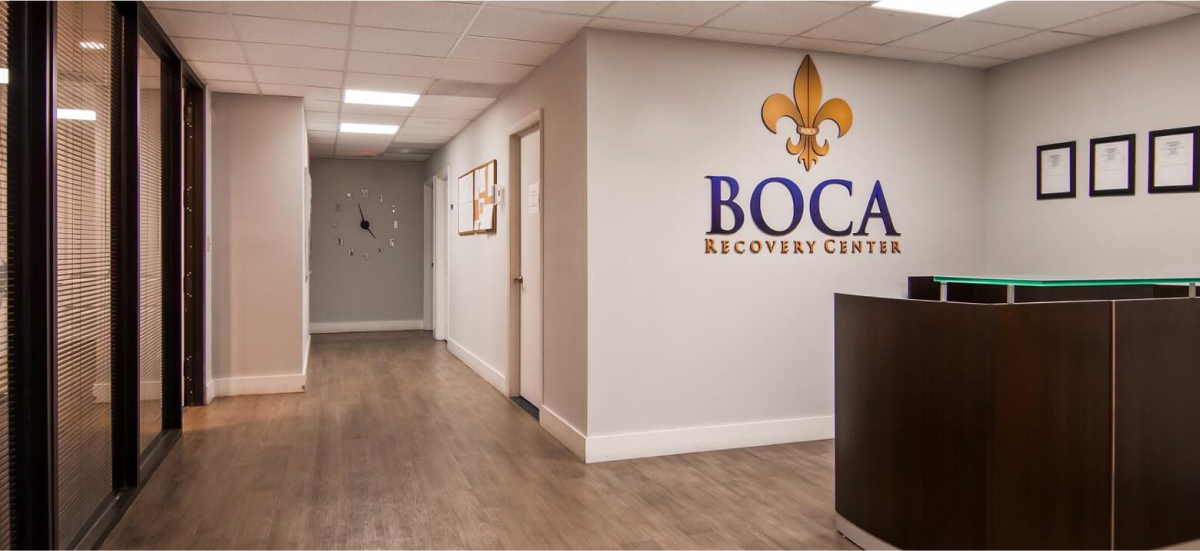What Is Librium Withdrawal?
The severity of chlordiazepoxide withdrawal symptoms is influenced by genetic factors, dosage and duration of use, and psychological factors.
Both the body and the brain are affected by chlordiazepoxide. Discontinuing use or reducing the dosage suddenly after a period of sustained use can cause the body and the brain to react in severe ways.
Librium affects the neurotransmitter GABA (gamma-aminobutyric acid). This neurotransmitter produces feelings of relaxation and drowsiness. After prolonged use, an individual’s brain depends on Librium in order to produce this sensation.
As the body and brain go into withdrawal, symptoms of anxiety, increased blood pressure, and increased heart rate often occur.
Understanding Post-Acute Withdrawal Syndrome for Librium
Post-acute withdrawal syndrome can occur with Librium dependence, as it can with dependence on all benzodiazepines. This syndrome can last for weeks, months, or even years after quitting drug use. PAWS is sometimes referenced as post-withdrawal syndrome, protracted withdrawal syndrome, and prolonged withdrawal syndrome.
Primary symptoms of post-acute withdrawal syndrome include the following:
Mood swings
Insomnia
Increased anxiety
Body aches
Headaches
Nausea
People who have been abusing benzodiazepines like Librium are most at risk for PAWS. Some people continue to experience PAWS symptoms for years after quitting benzodiazepine misuse.
What Causes Librium Withdrawal?
The severity of Librium withdrawal is dependent on a variety of factors, including frequency of use as well as average dose amounts, genetic factors, personal metabolism, and any health issues.
Librium withdrawal is caused by the body and brain’s dependency on the drug. The feel-good element becomes a sought-out source of comfort. Both the body and brain have been altered as a result of continued benzodiazepine use, which causes both physical and psychological dependence.
Predominantly, Librium withdrawal is caused by central nervous system overactivity, which causes undesirable symptoms and complications. Anxiety, sleep disorders like insomnia, and seizures can all be traced to an under-regulated central nervous system.
The body has become accustomed to the continual presence of chlordiazepoxide. When doses are lowered or it is no longer present at all, withdrawal sets in.


Benzodiazepines Side Effects
What Are the Common Symptoms of Librium Withdrawal?
Librium withdrawal symptoms can range from light to severe, depending on the circumstances and the individual. High-dose and long-term chlordiazepoxide misuse is likely to lead to more severe withdrawal symptoms.
Most common Librium withdrawal symptoms include the following:
Anxiety
Insomnia
Irregular heart rate
Elevated blood pressure
Nausea
Vomiting
Constipation
Hallucinations
Tremors or seizures
Memory loss
Psychosis
You need medical supervision to detox from Librium safely.
If you begin experiencing any sort of chlordiazepoxide withdrawal symptoms when you lower your dose or stop taking the medication, consult a medical professional. It’s a sign that you need a medical detox process to ensure you are safe throughout the withdrawal process.
If you believe your withdrawal symptoms are severe or on the verge of being severe, it’s important to seek medical attention immediately.
Comparing Librium Withdrawal Symptoms
Most people who quit benzodiazepines move through three phases of symptoms. If you enroll in a treatment program, you won’t experience severe changes. However, you may not feel like yourself until the program is complete.
This chart can help you understand the symptom differences between the three phases:
| Early Withdrawal | Peak Withdrawal | PAWS |
|---|---|---|
| Anxiety | Seizures | Mood swings |
| Mood swings | Delirium | Insomnia |
| Insomnia | Hallucinations | Increased anxiety |
| Drug cravings | Body aches | |
| Headaches | ||
| Nausea |
Factors That Determine Intensity of Withdrawal Symptoms
Common factors that affect the intensity of Librium withdrawal symptoms include circumstantial biological, and psychological factors.
Dosage and duration of use
How long the drug has been used and dose amount are highly influential when it comes to withdrawal symptoms. The longer a person has used Librium and the higher the amount used, the more severe the withdrawal symptoms are generally going to be.
Poly-substance abuse
Using other drugs and/or alcohol in conjunction with Librium can compound dependence and intensify withdrawal symptoms as well.
Drug’s half-life
As a long-acting benzodiazepine, Librium has a half-life of 24 to 48 hours. Withdrawal symptoms may not set in until one to three days after lowering or stopping use.
Personal differences
Individual differences in metabolism, physical health issues, age, and mental health conditions can all influence the intensity of withdrawal.
How Long Does Librium Withdrawal Last?
Withdrawal duration depends on the individual in question and the factors described above. Generally, early symptoms will start to set in within one to three days of last use. Symptoms most often peak around the seven-day mark.
With many individuals, symptoms will begin to fade and subside around two weeks after discontinuing use. Certain symptoms, such as cravings for chlordiazepoxide, can last a month or longer. In cases of PAWS, some symptoms can even last years.
Librium withdrawal can be largely avoided with a tapered approach to withdrawal. This will help to reduce undesirable effects. It generally entails switching to another long-acting benzodiazepine and tapering off that medication.
Librium Withdrawal Timeline
Again, there isn’t an exact timeline for chlordiazepoxide withdrawal since individual factors come into play. Those who use Librium for an extended period of time and in high amounts usually experience withdrawal symptoms that come on quicker and last longer.
Here is a general withdrawal timeline for Librium:
| 1–3 days | Symptoms begin to set in, especially symptoms like anxiety, mood swings, insomnia, and drug cravings. |
| 7 days | Symptoms begin to peak within the first week of Librium withdrawal. Seizures, delirium, and hallucinations may happen during this time. |
| 14 days | At around the two-week mark, undesirable withdrawal symptoms usually begin to subside. While physical symptoms are the first to dissipate, psychological symptoms like insomnia, anxiety, and cravings may still remain. |
| 30 days | In most cases, withdrawal symptoms are largely gone around the one-month mark. Cravings for Librium and sleep issues may continue indefinitely. |
Medical Detox
Medical detox is recommended for chlordiazepoxide withdrawal. It is never recommended to stop taking benzodiazepines suddenly, as this can trigger dangerous withdrawal symptoms. You need medical supervision to detox from Librium safely.
Doctors recommend tapering off benzodiazepines to ensure a safe withdrawal process. The taper method entails slowly reducing dose amounts until the individual is completely off the drug. This is the preferable method for those who are physically and mentally dependent on Librium.
In a typical Librium taper, your team will reduce your initial dose by about 25%. Every week, your dose will be reduced by another 5-10%. Within about 15 weeks, your process will be complete.
Your team will look for symptoms like anxiety, panic, or severe insomnia. If they appear, your schedule might be too aggressive, and your taper should move more slowly. If you’re feeling healthy and comfortable, your team can taper quicker.
While the goal of withdrawal is to ultimately stop taking Librium, this isn’t addiction treatment in and of itself. When you’re feeling calm and clearheaded, your team will refer you to an addiction treatment program for counseling and education sessions to help you preserve sobriety.
How to Start the Librium Detox Process
Remember that you can’t handle Librium detox alone. You’ll need an expert’s help to finish the process properly. However, you are required to get the program started.
Take the following steps:
1. Find a treatment provider you like
Some people work with their doctors on withdrawal, while others enter dedicated detox programs.
2. Contact the provider, and prepare for enrollment
Your team will ask how much Librium you take now, and how long the abuse has continued. With that information, they can provide a tapering schedule that’s right for you.
3. Take time off work
Librium detox can be emotionally taxing, so you’ll need all of your energy to get through it.
4. Follow your team’s instructions
When the program begins, never skip steps, take too much medication, or otherwise violate the program your team developed.
Transfer to care. At the end of your detox program, enroll in a treatment program to learn more about how addiction works and how to avoid relapse.
- Chlordiazepoxide. (November 2022). StatPearls.
- Librium Prescribing Information. (October 2022). Drugs.com.
- Outcomes After Implementation of a Benzodiazepine-Sparing Alcohol Withdrawal Order Set in an Integrated Health Care System. (February 2022). Original Investigation Psychiatry.
- Withdrawal Syndromes. (October 2022). StatPearls.
- Post-Acute Withdrawal Syndrome (PAWS). Semel Institute for Neuroscience and Human Behavior.
- Alcohol Withdrawal Syndrome: Benzodiazepines and Beyond. (September 2015). Journal of Clinical & Diagnostic Research.
- Chlordiazepoxide-Induced Delirium in a Patient Undergoing Alcohol Withdrawal: A Case Report. (July 2022). Journal of Medical Case Reports.
- Challenges of the Pharmacological Management of Benzodiazepine Withdrawal, Dependence, and Discontinuation. (May 2018). Therapeutics Advances in Psychopharmacology.
- Does Type and Number of Used Substances Affect the Severity of Illness in Patients With Substance Use Disorders? (August 2021). The Egyptian Journal of Neurology, Psychiatry and Neurosurgery.
- Effective Treatments for PTSD: Helping Patients Taper From Benzodiazepines. (January 2015). National Center for PTSD.











